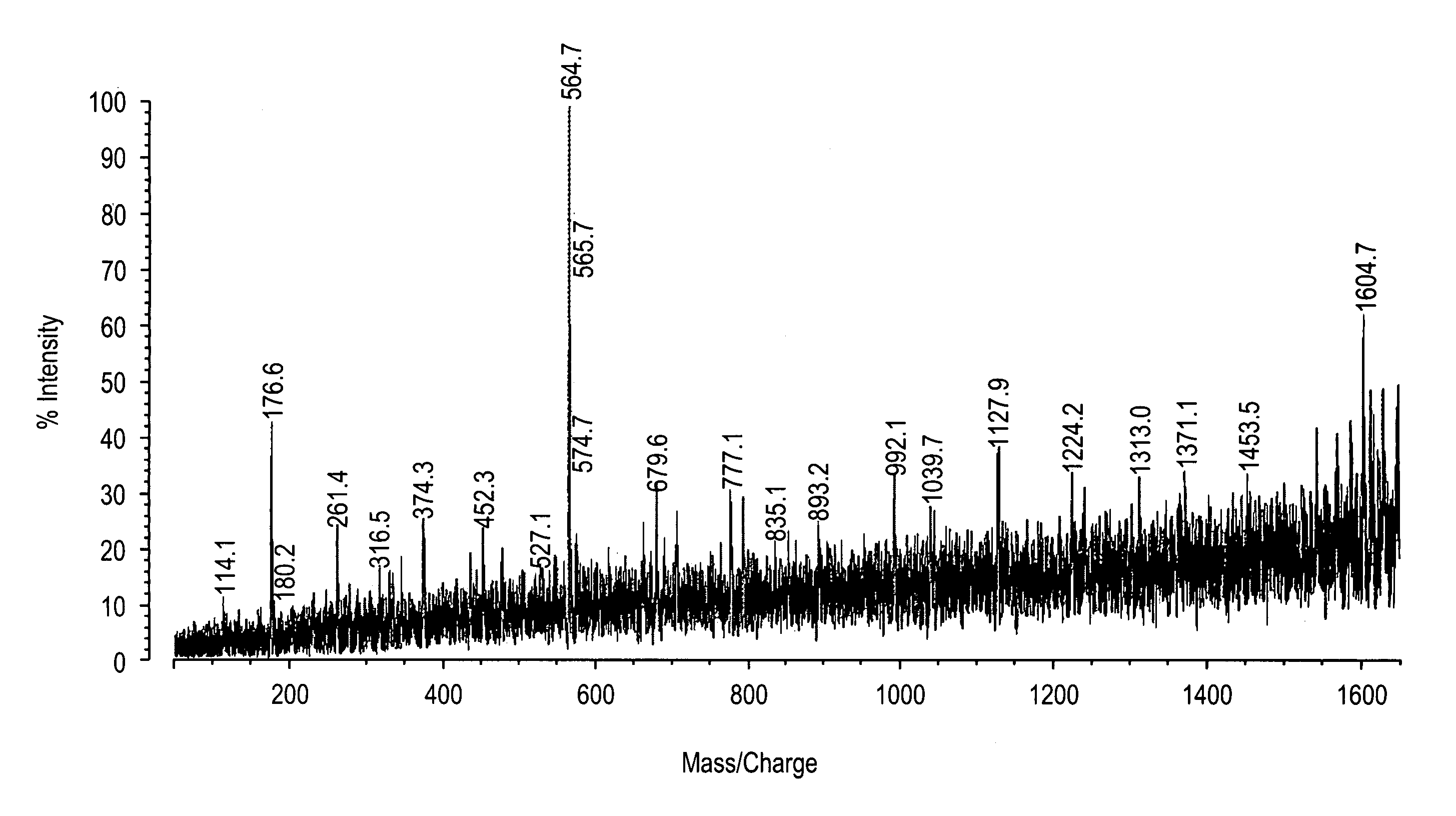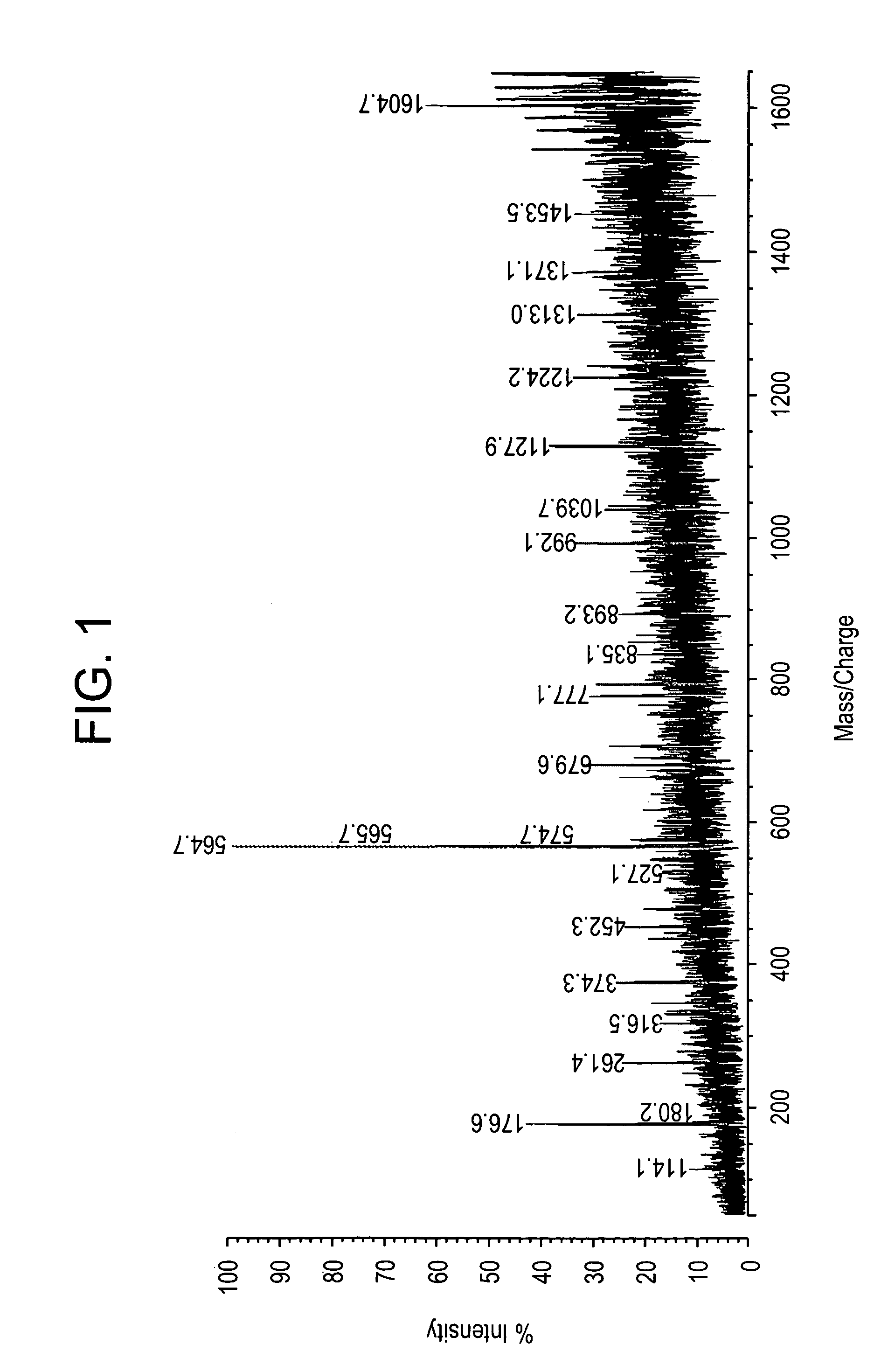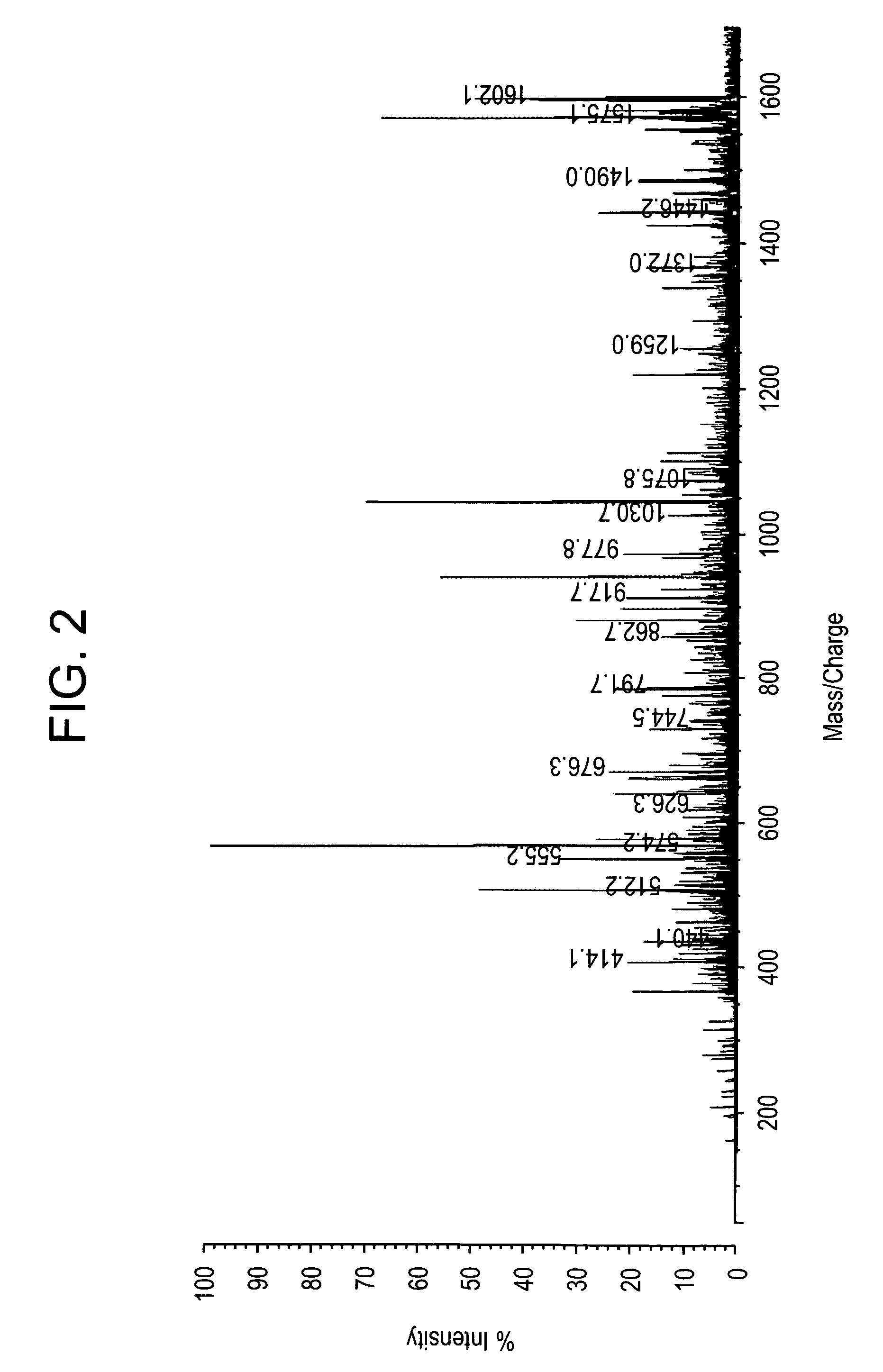Methods for direct biomolecule identification by matrix-assisted laser desorption ionization (MALDI) mass spectrometry
- Summary
- Abstract
- Description
- Claims
- Application Information
AI Technical Summary
Benefits of technology
Problems solved by technology
Method used
Image
Examples
example 1
Direct MALDI Cellular and Tissue Identification of Proteins Materials and Methods
[0217]All studies were approved by NYU IRB and IACUC protocols. Chemicals were purchased from: Sigma (St. Louis, Mo., USA), Invitrogen (Carlsbad, Calif., USA), Sakura Finetek (Torrence, Calif., USA), and Scott Specialty Gasses (Plumsteadville, Pa., USA), and used without further purification. All samples were analyzed with an Axima-CFR+(PSD) or QIT (CID) (Shimadzu, Columbia, Md., USA). The instruments were calibrated with four point samples of CHCA (a-cyano-4-hydroxy-cinnamic acid): 190.04 (M+H)—monoisotopic, bradykinin Fragment 1-7: 757.40 (M+H)—monoisotopic, angiotensin II (human): 1046.54 (M+H)—monoisotopic, cytochrome C (equine): 12,361.96 (M+H)—average, aldolase (rabbit muscle): 39,212.28 (M+H)—average, and albumin (Bovine serum): 66,430.09 (M+H)—average. MALDI-PSD and CID were chosen for this study because we could study both larger proteins and significantly larger peptides.
Cells
[0218]Cells—Human...
PUM
 Login to View More
Login to View More Abstract
Description
Claims
Application Information
 Login to View More
Login to View More - R&D
- Intellectual Property
- Life Sciences
- Materials
- Tech Scout
- Unparalleled Data Quality
- Higher Quality Content
- 60% Fewer Hallucinations
Browse by: Latest US Patents, China's latest patents, Technical Efficacy Thesaurus, Application Domain, Technology Topic, Popular Technical Reports.
© 2025 PatSnap. All rights reserved.Legal|Privacy policy|Modern Slavery Act Transparency Statement|Sitemap|About US| Contact US: help@patsnap.com



